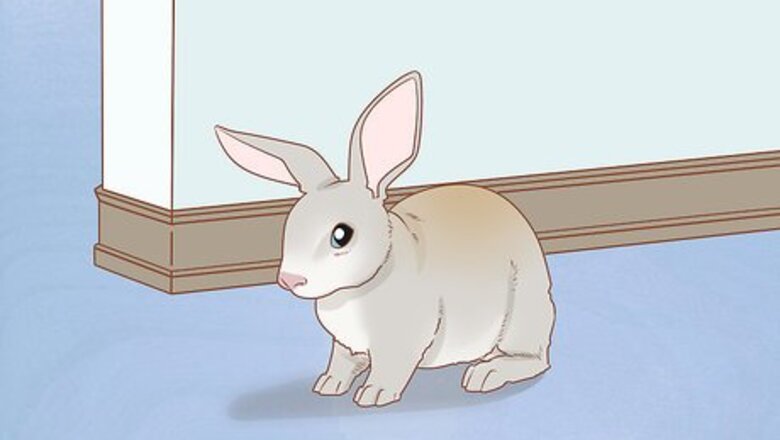
views
Establishing a Home
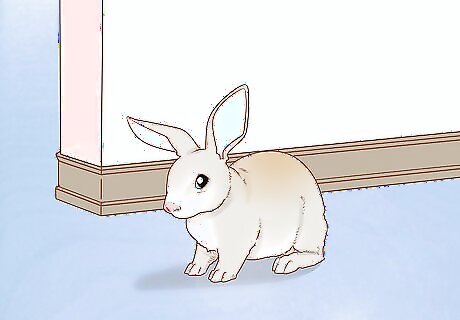
Decide whether indoor or outdoor is best for your rabbits. Some rabbit breeders prefer outdoor living quarters, as it allows rabbits to experience fresh air and sunshine, however, keeping your rabbit outdoor(s) can increase the risk of predation. They might benefit more from being indoors and around humans. If you decide to keep your rabbits outdoors, it's important that they are kept out of the sun, cold and rain. Outdoor rabbits need to be given extra bedding when it's cold out. If temperatures dip below freezing, consider moving the rabbit hutch to a more protected environment, like a garage or shed. Be aware that being outdoors leaves rabbits vulnerable to predators. Rabbits can also catch diseases if they're housed outside.
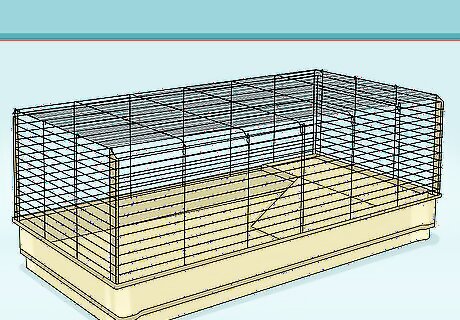
Choose a proper pen. Though rabbits are commonly kept in cages and hutches, these do not give adequate exercise space, which they should have 24/7 access to. A pen that is 3x4 feet or larger is good, but if it is possible bunny proofing a space for free-roaming is best. Consider the size of the space, so your pets have enough room. Rabbits can get sore hocks on any surface if not cared for properly, whether wire or solid floor. Making sure your rabbit has a clean surface to walk on is important to prevent sore hocks and other foot issues. Rabbits should not be in wire bottomed enclosures! Pens should be large enough for your rabbits to stand upright, lie down, and run around freely.
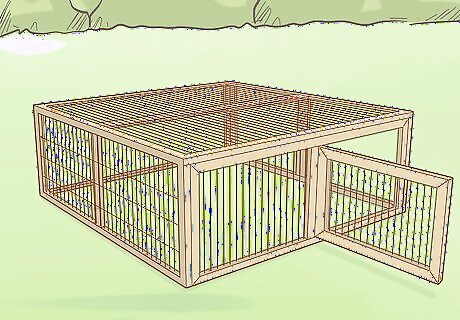
Build your rabbits a run. Rabbits are best as indoor pets, but giving them some outside time can really benefit them. Your pets will need daily exercise, and a run allows your rabbits to move around without getting anywhere in the house that could be dangerous. A rabbit in the wild may cover hundreds of feet on any given day, so having room to roam safely is crucial for your pets. If you don't have room for your rabbit to run indoors this may not be the best pet for you. You can put a run in your yard. The run should be spacious, but it should be secure in case the rabbit or rabbits try to escape. Always keep the run in the shade and supply water. If there is no shade in your yard, you may need to put a detachable "roof" over the run.
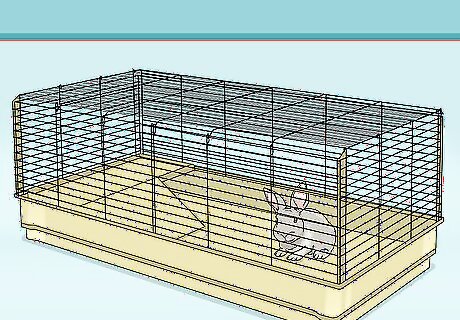
Make your rabbits comfortable. Try to keep your rabbit in a cool, low-humidity environment, ideally between 60-70 degrees Fahrenheit (15.5-21.1 degrees Celsius). Set up your rabbit's pen in a quiet part of the house, and be sure that your rabbits won't be harassed by other animals. Allow your new rabbit to acclimate to your home before you interact with it. This can be stressful and overwhelming. Allowing rabbits and other pets to mingle isn't important. Do not allow your rabbit to be free around your cat or dog. It only takes a second.
Caring for Your Rabbits
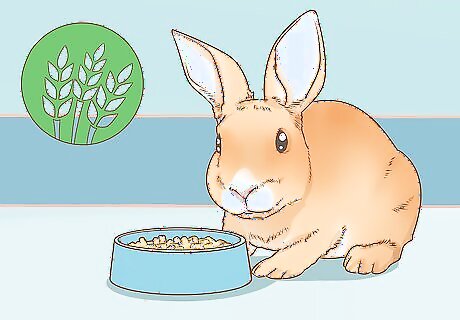
Feed your rabbit a healthy diet. A rabbit's diet should consist of grass and timothy hay or oat hay. More specifically, a rabbit should have an unlimited supply of hay. You can also feed your rabbit store-bought pellets. Leafy greens and the occasional low sugar vegetable are treats. One of the most trusted brands for pellets and timothy hay is Oxbow. Make sure that you get your rabbit the right kind of pellets (youth pellets if the rabbit is under 6 months, adult if the rabbit is older than 6 months). High-fiber pellets should be offered daily, but in small quantities to prevent health problems. Rabbits under four pounds can be given 1/4 cup of pellets. As a general rule, you can add another 1/4 cup of pellets daily for every additional two pounds of body weight on your rabbit. Young rabbits can be given alfalfa hay, but alfalfa is not a healthy option for adults. It's recommended that you switch your rabbit to timothy hay before it reaches one year old.
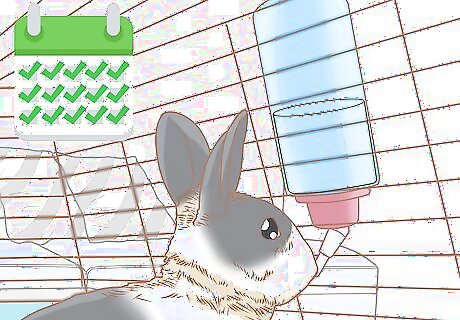
Give your rabbit fresh water daily. It's important to change your rabbit's water every day to prevent bacteria from growing. Use a water bowl made of ceramic, rabbit safe plastic, or metal, as these are easier to clean. Some pet owners prefer sipper bottles because they cannot be easily tipped over in the cage; however, rabbits get dehydrated easily with a sipper bottle. The sipper bottles can also collect germs at the spout. Remember rabbits can drink as much as a small dog, so a heavy water bowl that cannot be knocked over is best.
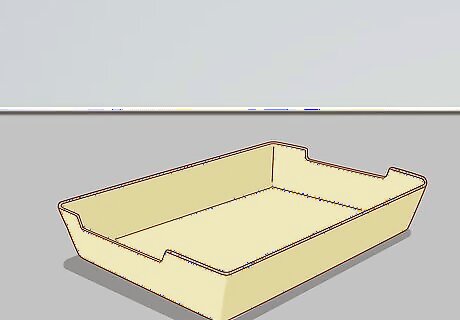
Empty your rabbit's litter box every 1-3 days. This will not only reduce the risk of unpleasant odors, but it will also keep your rabbit healthy and happy. If you are just starting out training your rabbit to use a litter box, you should be able to tell which corner your rabbit goes in to relieve itself. If you put some newspaper or a litter box down there, your rabbit will quickly learn to use the box. You may want to scoop out urine-soaked litter on a daily basis to keep your rabbit clean and keep the litter box smelling fresh.
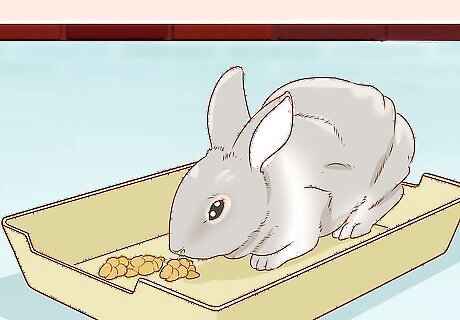
Remember that rabbits are coprophagic. Rabbits excrete two kinds of droppings: fecal pellets (round, hard, dry waste product) and cecotropes (large, soft, light-colored droppings). The digestive system of rabbits requires that the animal eats its cecotropes in order to adequately absorb and digest the nutrients found in food. When cleaning out the litter box, remove hard, dry fecal pellets, but be sure to leave cecotropes behind. These "droppings" are an essential part of your pet's diet.
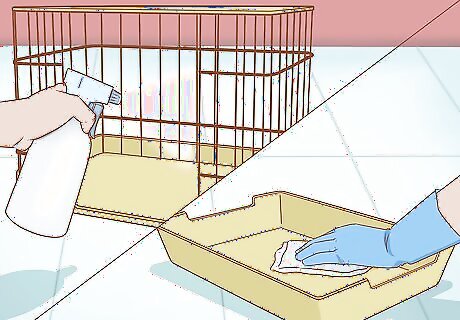
Clean your rabbit's cage once every week. Use white vinegar to clean your rabbit's litter box, or soak it for stains that are tough to remove. Spot cleaning should be done daily. Clean the cage out while your rabbits are in the run. Change soiled bedding daily. Straw makes an excellent bedding material and is easy to change every day. Clean out the food bowl and change the food daily. Do not overfeed your rabbit. Food portions should be commensurate with the size and weight of your rabbit.
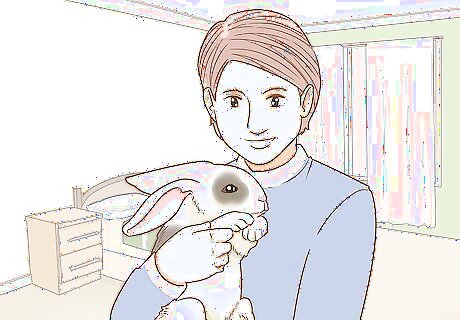
Give your rabbit plenty of attention. Rabbits are social animals, and you will need to handle your rabbit gently and frequently in order for it to grow comfortable being picked up.
Grooming Your Rabbit
Brush your rabbit at least once every week. Wool rabbits need their coats blown and brushed daily (never blow out coat with hot air). Carefully brush out mats, but never tug on the delicate skin. You can alternatively shear the coat to less maintained. Pay special attention to a wool breed's feet as wool grows on the foot in heavily wooled rabbit breeds. The wool can mat up and part the protective hair on the feet, leading to sores.
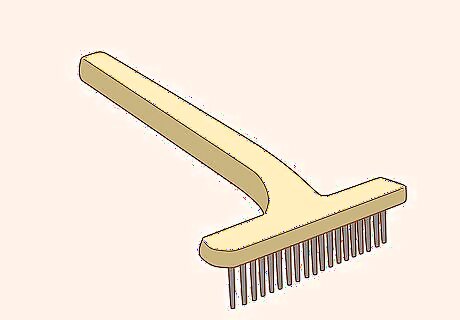
Remove mats with a mat splitter or mat rake.
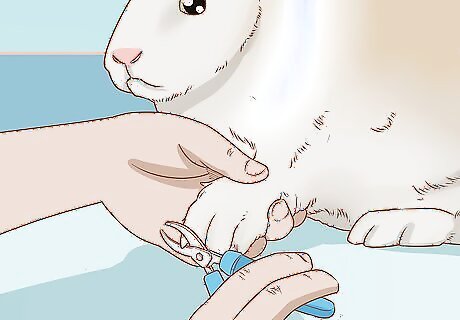
Trim your rabbit's nails as needed. If you are uncomfortable doing this on your own, you may take your rabbit to a veterinarian or to an animal groomer to have this done.
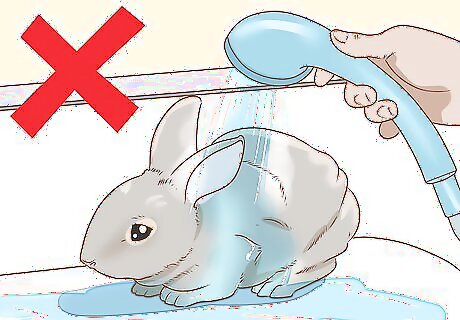
Do not bathe your rabbit. Bathing can be very traumatic, and is unnecessary, as rabbits tend to groom themselves. If you notice a soiled area on your rabbit, you may want to spot-wash it with a wet towel, but do not submerge your rabbit in water as it can lead to shock.



















Comments
0 comment